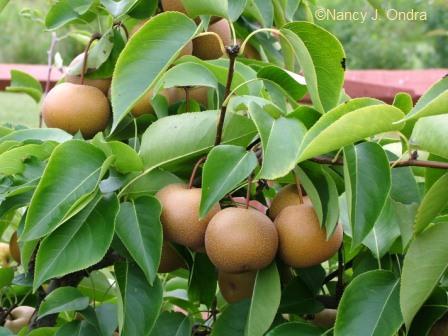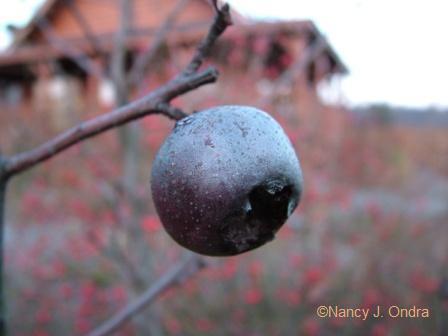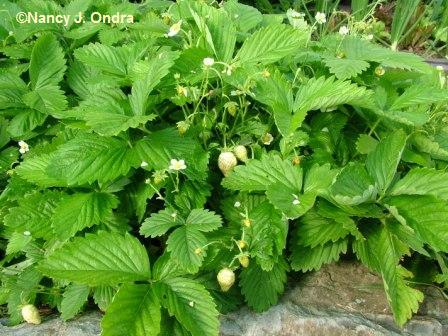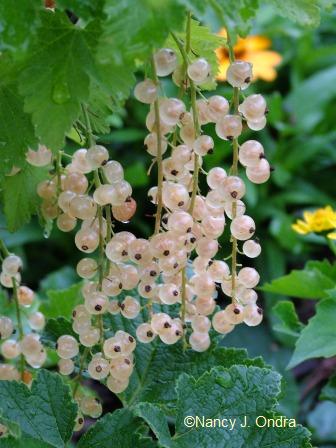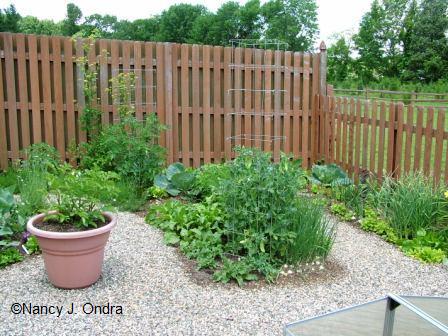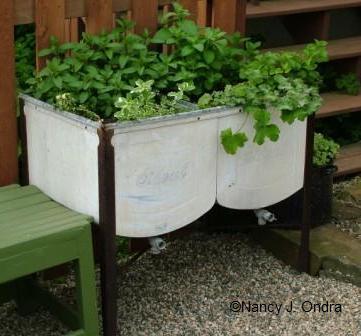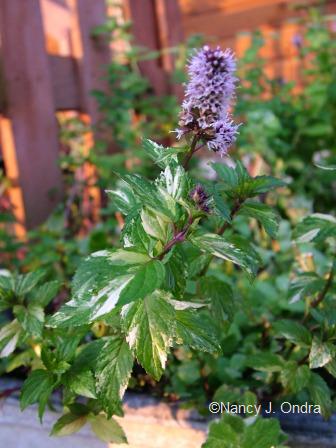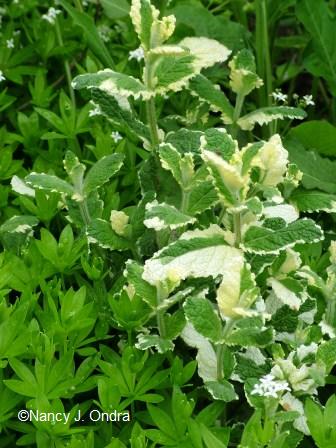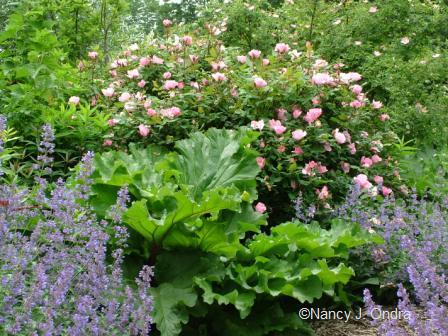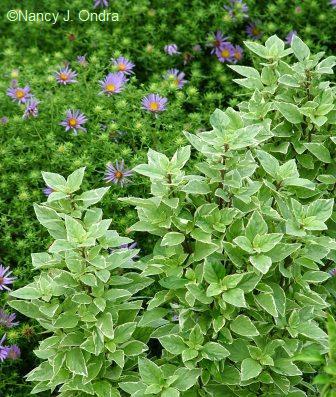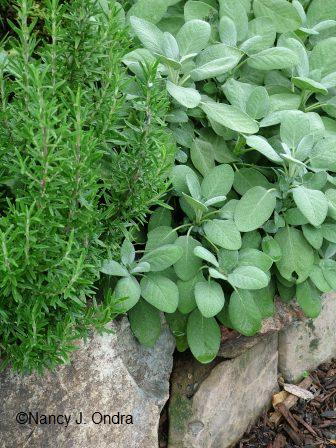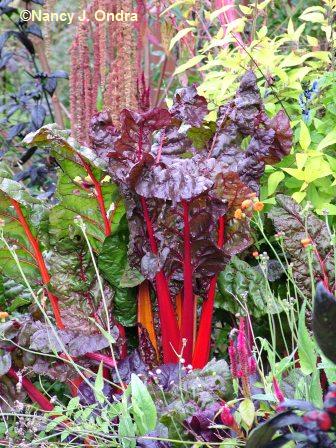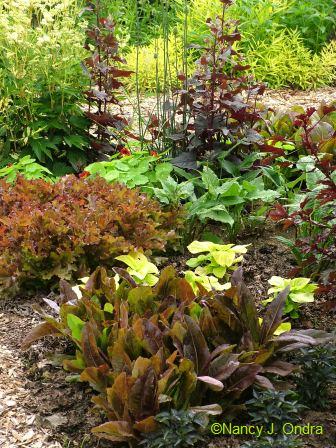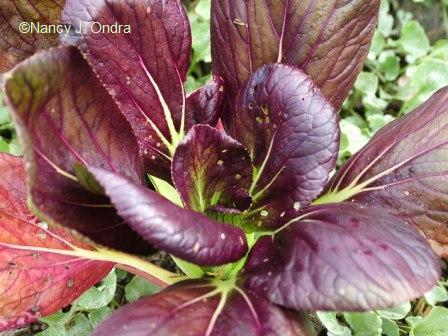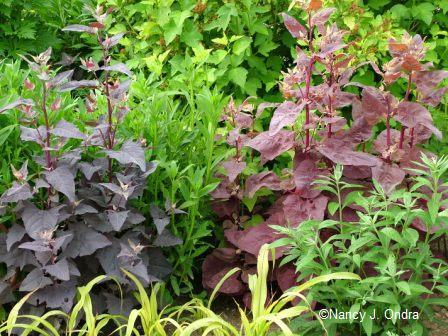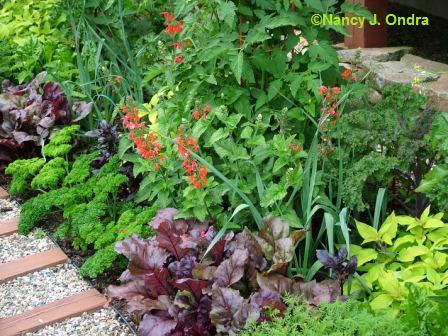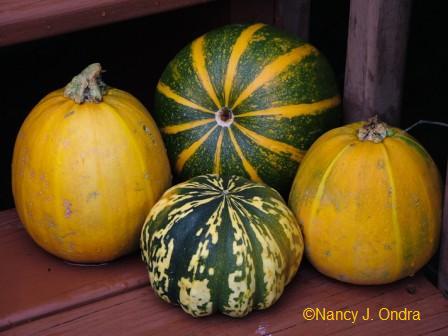Flowers may feed the soul, but sooner or later, the body has to eat too. It’s great if you can score most of your food locally, and even better if it’s organically grown, but the ultimate in freshness and flavor has to be from edibles picked from your very own garden. There are all kinds of ways to work veggies, herbs, and fruiting plants into your yard: by creating a separate vegetable garden, herb garden, or orchard that’s designed purely for production, for instance; by organizing your edibles into a handy-for-harvest kitchen garden; or by blending them into your ornamental beds and borders for casual grazing.
I’ve ended up using all three of those approaches in my own garden. Out back, in what I call “The Orchard Garden,” is a variety of fruting plants, including a ‘Methley’ plum, a ‘Surefire’ cherry, and my treasured four-in-one Asian pear tree.
I also have a quince, just because it’s a pretty tree (making jelly from anything is definitely not on my to-do list), and a medlar, because the clinging fruits look so neat in winter.
I’ve also added thornless ‘Chester’ blackberries (thornless is great, flavor is just okay); red ‘Caroline’ and yellow ‘Anne’ raspberries (‘Anne’ is fantastic); and everbearing ‘Tristar’ strawberries and ‘Yellow Wonder’ alpine strawberries (both are a treat to pick all summer).
I love gooseberries too, though I’m still not adept at judging when they’re perfect for picking, and they don’t seem to like our summer heat much. Pearly white ‘Primus’ is one of my favorite currants for good flavor…
…and the jewel-like red fuits of ‘Jonkheer Van Tets’ are so gorgeous that they certainly qualify as ornamental. Here, too, I’m learning to leave them on the plant for a few weeks after they turn red, so they have a chance to sweeten. It’s hard to wait, though.
Sounds like a lot of fruit, I guess, but it’s well spread out from June through October. So, I can find a handful or two or one thing or another to snack on most days during the growing season, but there’s usually not enough to have to think about bringing the excess indoors and preparing it for storage.
The orchard area also has beds for some larger veggies, such as vining squash, rutabagas, parsnips, and bush beans. Then there’s the kitchen garden right off the back porch, for salad greens, onions, herbs, and other veggies that benefit from some extra attention to weeding, watering, and pest control.
This wonderful old washtub I found in my parents’ barn is one of my favorite features in the kitchen garden.
Sometimes I use it for arugula and other early greens to keep them out of reach of slugs. But it also makes a great container for creeping mints, such as variegated peppermint…
…and pineapple mint.
My favorite way to grow edibles, though, is using them for their ornamental qualities first, then grazing on them every now and then, or just enjoying their good looks. Rhubarb, for instance, is awesome for bold foliage until midsummer, at least.
Plenty of herbs are just as attractive as they are flavorful. ‘Pesto Perpetuo’ basil is a winner for its variegated foliage, great fragrance, and distinctly upright habit.
‘Berggarten’ sage, too, is superb for foliage interest, with broad, bright silver-gray leaves that are richly aromatic. (If it didn’t have an annoying habit of sometimes dying suddenly, it would be one of my top-10 plants for sure.)
As for great-looking veggies – well, there’s an abundance of options: colored-stem Swiss chards, such as this ‘Bright Lights’ seedling…
…luscious lettuces, such as ‘Really Red Deer Tongue’ (in the foreground) and ‘Mascara’ (behind ‘RRDT’)…
…’Violetta’ pak choi…
…colorful orachs (Atriplex hortensis), such as ‘Rubra’ (left) and ‘Magenta Magic’ (right)…
and ‘Bull’s Blood’ beets.
One more honorable mention as double-duty veg: ‘Eight Ball’ (dark green) and ‘One Ball’ (yellow) bush zucchini. They’re prolific, like all zucchini, but if you leave the unneeded, harvested fruits sitting outdoors for a few weeks or months, they’ll turn color and make fun mini-pumpkin or gourd look-alikes by the end of the season. In the photo below are two mature ‘One Ball’ fuits on either side, a striped ‘Eight Ball’ at back, and a speckled ‘Carnival’ squash’ (another winner for taste and looks) in front.
Okay, that’s more than enough from me. Now it’s your turn to share how you enjoy growing edibles in your own garden. We could all use more ideas on how to make a vegetable garden look great, or how to incorporate edible fruits into our landscapes, or how to make a feature from container-grown veggies. Herb gardens, planters, and ornamental plantings that include edible herbs count too!
If you’re new to the Garden Bloggers’ Design Workshop, here’s how it works: Write a post on anything related to incorportaing edibles into the garden on your own blog and leave a link here (already-archived posts count too), or jot down your thoughts in a comment below. At the end of the month, I’ll gather all of the links into one summary post for easy reference. If you’re interested in checking out previous GBD Workshops, you can find them here:
Paths and Walkways
Fences and Walls
Arbors and Pergolas
Color in the Garden
Container Plantings
Front-Yard Gardens
Stone in the Garden
Decks, Porches, and Patios
Garden Whimsy
Trellises and Screens
Water in the Garden
Sheds and Outbuildings
One final note: This month marks the one-year anniversary of the Garden Bloggers’ Design Workshop. Many, many thanks to all of you who have participated, by reading or posting, or both!


